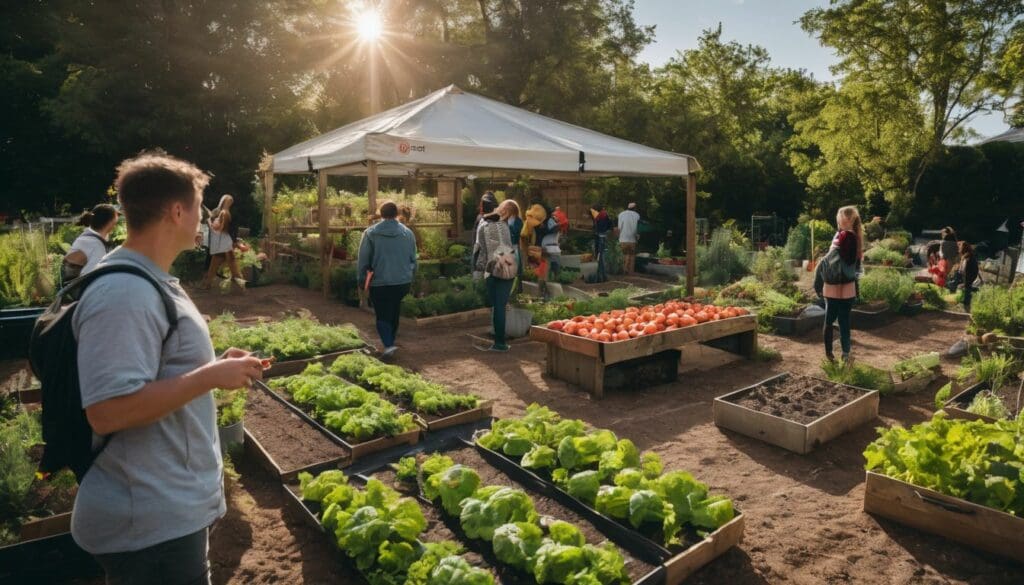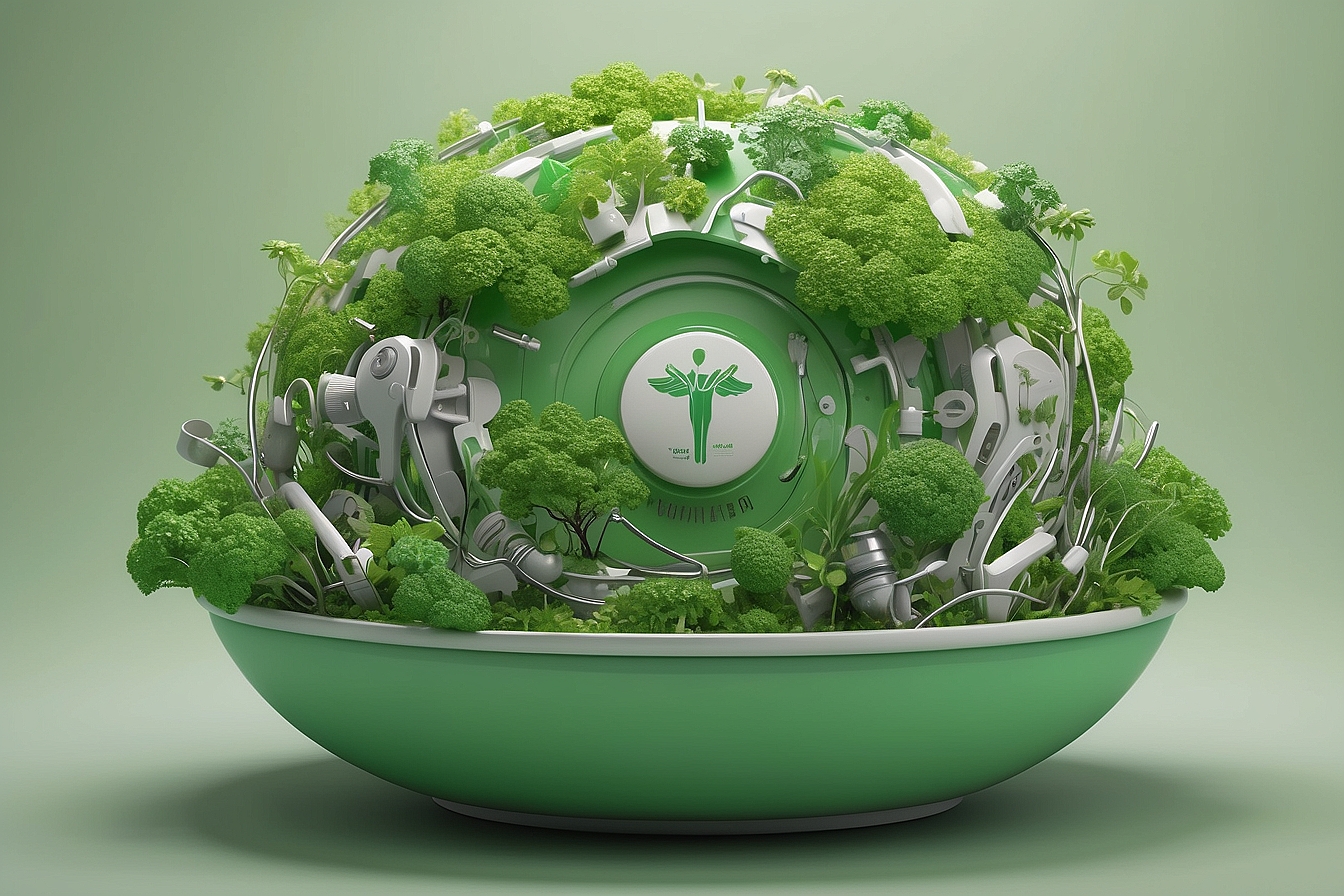Striving for a life filled with health and vigour is a common thread that unites us all. Yet, the delicate balance between our own longevity and the well-being of our precious planet is something we often find ourselves pondering over a cuppa.
It’s quite the conundrum, but here’s an interesting nugget to chew on: by 2050 it’s anticipated that the number of individuals gallivanting into their golden years will have soared twofold worldwide.
Our piece meticulously unravels how adopting a lifestyle steeped in sustainability isn’t just beneficial for your personal tapestry of years; it’s also a heartfelt homage to Mother Earth.
So allow us to guide you step by eco-friendly step towards blossoming not only in life but in leaving behind a world replete with green splendour – hand in hand!
Key Takeaways
- By adopting eco – friendly habits and reducing our carbon footprint, individuals can play a significant role in creating a healthier planet for future generations.
- A sustainable environment encourages healthy aging by providing clean air, water, and space for physical activity, leading to better well-being.
- Making mindful choices about materials and products leads to less waste and supports the shift towards a circular economy that benefits both people and the planet.
- Embracing sustainability practices ensures equitable longevity where everyone has access to resources necessary for long and healthy lives.
- Policies that promote public health, environmental protection, and fair resource distribution are essential for achieving a balanced world with sustainable living.
The Importance of Sustainable Living for Longevity
Promoting eco-friendly practices and reducing waste are crucial for ensuring a healthier planet for future generations. It is essential to recognise the impact of our carbon footprint on the environment and take steps towards responsible consumption.
Promoting eco-friendly practices
We lead by example in embracing eco-friendly practices that pave the way for sustainable living and longevity. By integrating green habits into our daily routines, we can significantly lower our environmental impact while fostering a sense of responsible consumption.
Our choices range from opting for products with minimal packaging to supporting businesses committed to ethical living and conservation efforts.
Adopting an environmentally friendly lifestyle requires active participation in reducing energy consumption and waste. We encourage the use of renewable resources and invest time in learning about sustainable development initiatives.
Sharing knowledge about eco-friendly practices is fundamental to preserving natural resources for future generations, ensuring a balanced approach to life that aligns health and wellness with environmental responsibility.
Reducing waste and carbon footprint
We commit to reducing waste and our carbon footprint by embracing eco-friendly practices and responsible resource management. Choosing sustainable materials and products helps us conserve natural resources, promoting a balanced and sustainable living environment.
Shifting to a circular economy encourages longevity in products and practices, contributing to the prolonged lifespan of our planet. By making environmentally friendly choices, we ensure healthier living spaces for future generations.
Let’s explore how a sustainable lifestyle supports healthy aging while preserving natural resources for the benefit of all.
Ensuring a healthier planet for future generations
Preserving the Earth for future generations is vital. We must prioritise sustainable living and environmental conservation efforts to ensure a healthier planet for posterity. By embracing eco-friendly practices, reducing waste, and minimising our carbon footprint, we play an active role in maintaining the long-term viability of our natural resources.
This approach fosters responsible custodianship and supports our shared vision for a greener, more sustainable future.
Promoting environmentally friendly living not only benefits current populations but also sets the stage for healthy lifestyles and longevity for generations to come. Our commitment to organic living and conservation of natural resources paves the way for a world where everyone can enjoy the benefits of green living.
The Link Between Healthy Aging and Sustainability
A sustainable environment supports healthy aging by providing cleaner air, water, and food sources. Aging populations have an impact on sustainability efforts, making it crucial to find ways to support both healthy aging and environmental conservation.
How a sustainable environment supports healthy aging
A sustainable environment supports healthy ageing by providing clean air and water, reducing exposure to pollutants, and fostering physical activity through green spaces. By promoting eco-friendly practices and natural resource preservation, we can ensure a healthier planet for future generations while also positively impacting our own longevity.
Moreover, creating an environment that supports sustainable living can help in achieving equitable longevity for all individuals, ensuring that everyone has the opportunity to age healthily in a thriving ecosystem.
Encouraging eco-friendly practices not only benefits the Earth but also contributes to long-term viability for ageing populations. As we shift towards more sustainable materials and products, we can create a synergy between healthy living and environmental sustainability.
The impact of aging populations on sustainability efforts
As our population grows older, the demand for resources and healthcare increases. This places strain on sustainability efforts as more consumption and waste are generated. Additionally, an aging population can lead to a decline in the workforce, impacting productivity and innovation in sustainable practices.
Furthermore, older individuals may have specific needs that require additional resources and infrastructure, affecting the overall sustainability of communities. Therefore, it is crucial to consider the impact of aging populations when planning for long-term sustainability and ensure that strategies are inclusive of all age groups to support equitable longevity for future generations.
Practical Steps for Combining Sustainability and Longevity
Choosing sustainable materials and products can significantly reduce our environmental impact. It’s important to encourage longevity in both products and practices, as well as shifting towards a circular economy for a more sustainable future.
Choosing sustainable materials and products
When selecting sustainable materials and products, we prioritise long-term viability. We opt for eco-friendly options to reduce our carbon footprint and support conservation efforts.
By choosing sustainable materials and products, we actively contribute to ensuring a healthier planet for future generations while promoting environmentally friendly practices.
To enhance longevity in our choices, we focus on encouraging the use of durable products that are designed to last. Shifting towards a circular economy also plays a crucial role in reducing waste and promoting sustainability.
Encouraging longevity in products and practices
Choosing sustainable materials and products is an important step in promoting longevity. By opting for durable items made from eco-friendly materials, we contribute to reducing waste and conserving resources for the long term.
This approach supports the idea of creating a circular economy where products are reused, repurposed, or recycled, minimising their environmental impact and extending their lifespan.
Encouraging longevity in practices involves embracing sustainable habits that align with our commitment to environmental conservation. Repair instead of replace culture not only reduces our carbon footprint but also fosters a mindset of responsible consumption.
Shifting to a circular economy
Transitioning to a circular economy involves rethinking how we produce and consume goods. It means moving away from the traditional linear model of take-make-dispose to a system that prioritises reuse, recycling, and regeneration.
Embracing a circular economy requires designing products with longevity in mind, using materials that can be easily recycled or repurposed. By shifting towards this approach, we can minimise waste, reduce our environmental impact, and create a more sustainable future for generations to come.
Encouraging businesses and individuals to adopt circular economy principles is vital for promoting eco-friendly practices and ensuring the long-term viability of our planet. This shift will not only help us mitigate the effects of population growth but also lead us towards a healthier environment with reduced carbon footprint and increased resource efficiency.
Building a Synergistic Approach for the Future
We will explore the role of healthy living in promoting a sustainable world and achieving equitable longevity for all. Read on to learn more about how sustainability and longevity go hand in hand.
The role of healthy living in promoting a sustainable world
Living a healthy lifestyle directly contributes to the sustainability of our planet. By making mindful choices about diet, exercise, and mental well-being, we can reduce our environmental impact and support the long-term viability of our ecosystems.
For instance, eating locally sourced organic produce reduces carbon emissions from transportation and supports sustainable agricultural practices. Regular exercise not only benefits personal health but also decreases the reliance on fossil fuels by promoting walking or cycling instead of driving.
Furthermore, fostering mental well-being through mindfulness practices helps us appreciate nature and encourages conservation efforts.
Achieving equitable longevity for all
Transitioning from the role of healthy living in promoting a sustainable world, achieving equitable longevity for all is crucial. This involves creating an environment where everyone has equal access to resources and opportunities that support long and healthy lives.
It means addressing social, economic, and environmental inequalities to ensure that people of all backgrounds can enjoy the benefits of sustainable living and have the opportunity to live long, fulfilling lives.
This requires not only promoting eco-friendly practices but also advocating for policies and initiatives that create fair access to healthcare, nutritious food, clean water, and safe living conditions.
Conclusion
In conclusion, sustainable living is crucial for promoting longevity and ensuring the long-term viability of our planet. By adopting eco-friendly practices and reducing waste, we can contribute to a healthier environment for future generations.
Making practical choices in daily life, such as selecting sustainable materials and supporting a circular economy, can further align sustainability with longevity goals. Building a synergistic approach that integrates healthy living with environmental conservation will help create a balanced and equitable world for all.
FAQs
1. What does sustainable living mean for longevity?
Sustainable living involves adopting eco-friendly practices that support the long-term viability of our planet, which can contribute to healthier lifestyles and longer lifespans.
2. How do eco-friendly practices enhance sustainability?
Eco-friendly practices reduce environmental harm, conserve resources and foster a balance that helps ensure our planet’s health and longevity.
3. Can adopting sustainable habits really make a difference in my life span?
Yes, when you live sustainably by choosing environmentally friendly options, you often lead a cleaner, greener lifestyle that can have positive effects on your health and potentially increase your lifespan.
4. What are some simple changes I can make for more sustainable living?
You can start with small steps like recycling, reducing waste, conserving water and energy at home – each little change contributes to the overall goal of sustainability and personal well-being.





